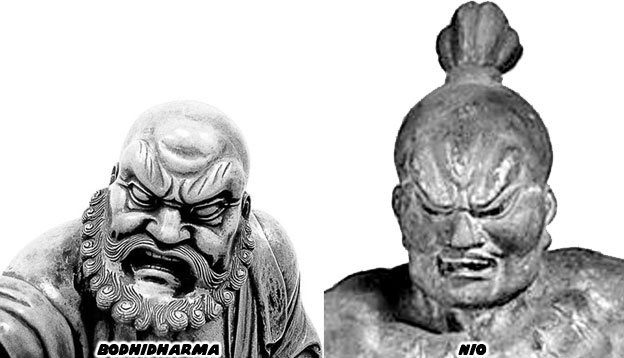
Bodhidharma seemed to be a physical manifestation of the ancient Nio and this appealed to the Japanese. Over the centuries the figure would become more and more recognized until he had also received some level of icon status. Statues and decorations bearing his likeness could be found in temples and also in homes all throughout Asia. Fast forward to the end of the 20th century when the designers at Capcom, and in particular the manga illustrator Masaomi Kanzaki, had to put a face on the master of Ken and Ryu. Up until that point gamers had no idea who their master was. Due to a translation error the west had only known of "Sheng Long." They assumed that it was the name of the master instead of the name of a dragon punch. In Japan the master was known as Gouken but he had only been written about and had never been seen. Kanzaki committed the original design of Gouken to paper in the original Street Fighter manga series. The design had stuck ever since. The master of Ken and Ryu was a bald man, sporting a beard, dressed like a monk with an imposing stature. He had abilities and wisdom that were borderline supernatural. Capcom introduced his evil brother into the Street Fighter series inspired by the myth of Sheng Long. Gouki, Akuma in the USA, had murdered Gouken in a fit of jealousy. The face of Gouki was modeled after that of a lion but his overall impression was that of the Nio. If you were to place Gouken and Gouki side by side it would become apparent that the figures were based in part on Bodhidharma and the Nio.
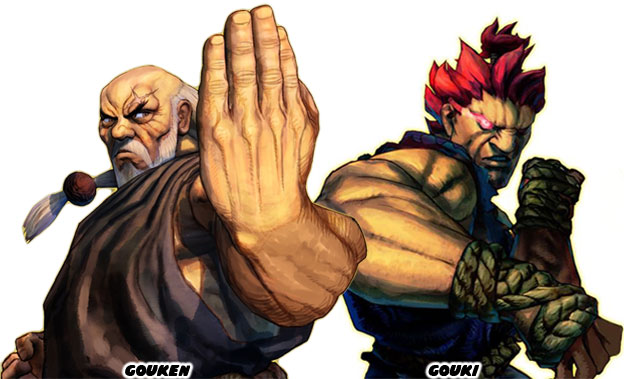
This connection to spiritual figures also explained why the alternate costumes for both fighters featured them wearing enormous Shinto ropes, called Shimenawa. Ropes were used to bind spirits, called Kami, into objects like rocks or trees in Shinto spiritual beliefs. The objects that attracted kami were known as Yorishiro. When the ropes were adorned with paper streamers, called shide, they marked the spiritual sacredness of the location or object. Throughout Japan there were trees and even islands bound by shimenawa and shide. Street Fighter, Samurai Spirits and a few other Japanese-developed games often made use of Shinto iconography. The unique thing for the spiritual belief was that kami could not only possess natural objects but also people as well. A Yorimashi or "Possessed Person" was a person that took the place of a Yoshiro. The rope belt that Gouki wore, instead of the cloth belt worn by traditional karate masters, would be a way for him to symbolically bind the kami to his body. The prayer beads he wore would be a way to keep the spirits under his control and not vice-versa. When Gouki would go crazy in the comic stories his prayer beads would break and scatter. Gouki would not longer be aware of himself as the Dark Hadou (evil spirits) had completely taken over. In the case of Gouken his belt and knot were designed to protect him from the forces of evil and give him the strength to endure.
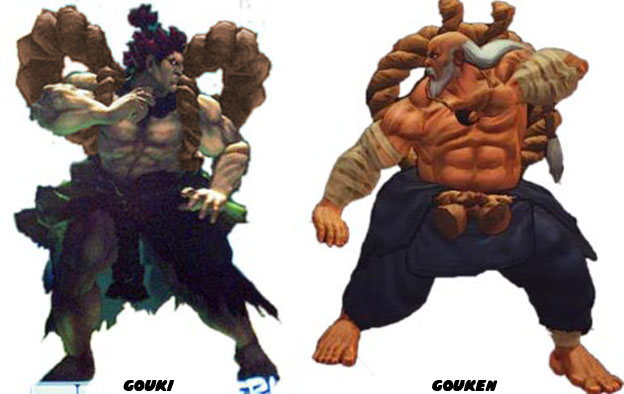
To make a crude comparison between the types of knots in Shinto beliefs think about the horseshoe mounted over the doorway in many western homes. If the horseshoe is pointing up then it collects fortune for whomever passes through the door. If the horseshoe is pointing down then it symbolically rains down fortune. The horseshoe can not be placed sideways and do a little of both. It is an up or down prospect or nothing at all. For the shimenawa knots it is either the defensive one where the ends point up, known as the Unryu or the offensive version called the Shiranui where the knot points down. Gouki being the more aggressive brother wears the Shiranui knot in his alternate costume. Sumo wrestlers, especially the grand champion (Yokozuna) celebrate the beginning and ending of the tournament season by replacing their synthetic fiber belts with the Shimenawa ropes, shide streamers and ornate knots. A traditional belt can be spotted as the alternate costume for the sumo wrestler E. Honda.
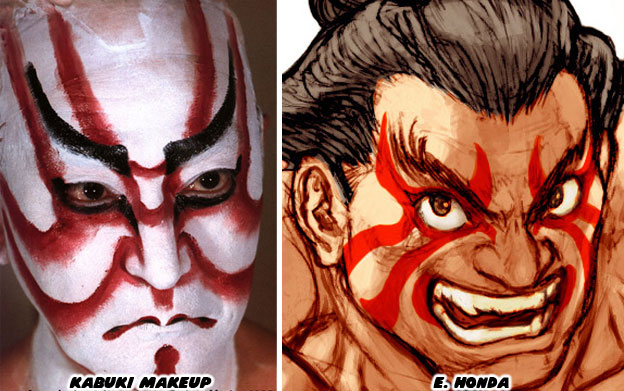
As an aside, the character of E. Honda was one of the first (slightly) controversial figures in the history of Street Fighter. Sumo wrestling was an ancient tradition, going back almost 2000 years. It had a lineage that could be traced back to Central Asia and India, just as karate could be traced back to aikido, kung-fu and older forms of fighting. Sumo above all other fighting forms was also known for having a strong connection to Shinto spirituality and was therefor revered by many nationals. The use of shimenawa belts, the referees that dressed in feudal-era uniforms and even practice of throwing salt in the ring to ward off evil spirits was all based in Shintoism. The decision to use the theatrical face paint of the secular Kabuki theater was seen as a slap in the face to tradition. The designers at Capcom meant no harm with his look, they used the makeup to make the character seem anything but traditional. Honda had to stand out when compared to the colorful cast that would fill out the rest of the World Warriors introduced in Street Fighter II. Characters inspired by kabuki theater would turn up again in other Capcom fighting games, like Final Fight 3, as well as in games by competitors.
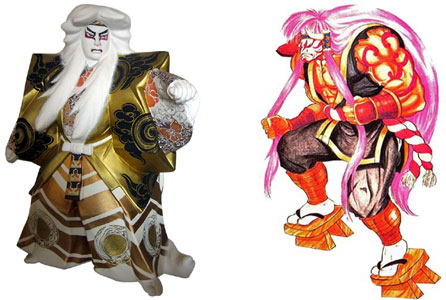
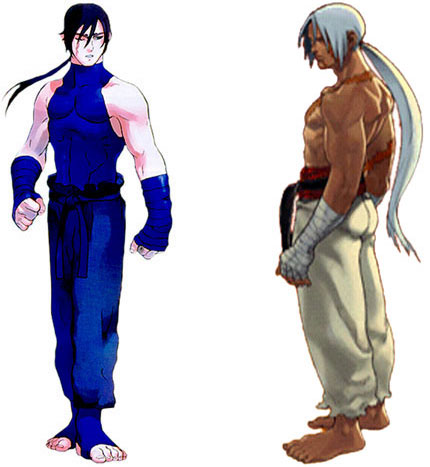
Western gamers wouldn't make sense of these things because most did not have exposure to Japanese mythology, spiritual beliefs or even have translations handy. Most Westerners could tell he was a cool character on the count of his scars and Ryu and Gouki-like moves, the rest of the symbolism was unimportant. While the moves were similar to the fireballs and dragon punches we had been seeing since 1991, their origins were unique. The developers at AKIRA and artists at Capcom were showing players that no one style had exclusive dominion over those special attacks. In a similar fashion Sagat's tiger fireball and uppercut (and knee) were born from Muay Thai rather than karate, Dhalsim's special moves were the result of Yoga and Guile's was a secretive form passed down from Charlie Nash. So what form did Kairi employ? Was it karate or something else?
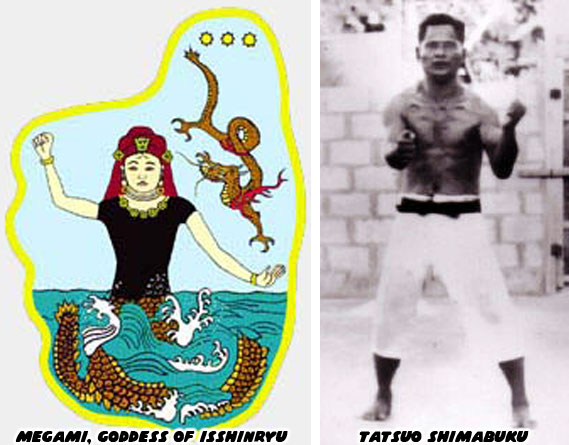
It had been suggested that he was an outcast from the Bushinryuu ninja clan, or a practitioner of the Kyoujarenbu, an "Iron Hand Technique." He was possibly even a practitioner of Mizugami (other times written as Megami or "Goddess") style of Karate. Mizugami style is sometimes dramatized in manga but is rooted in Isshinryu Karate. The form of karate was founded by Tatsuo Shimabuku. Tatsuo was born 1908 and studied in Kyan / Chan village under his uncle Kamusu Chan. The village had a fair share of Chinese immigrants. They were some of the first to introduce an older form of karate to the nation. Tatsuo became well versed in Shorinryu and Gojuryu karate while also studying classic Chinese forms. This diversity made him proficient in both armed and unarmed combat. He was actually one of the legendary fighters that predated Mas Oyama by a generation. Tatsuo avoided being conscripted into World War II by teaching Japanese soldiers how to fight.
Isshinryu meant "One Heart Method" and actually incorporated Goddess Mizugami on the patch sewn into the gi of practitioners. Ishhinryu had its roots in Okinawa but also in China where other martial arts influenced its development. It's spiritual connection was undeniable. I can draw a spiritual connection between Bodhidharma and Gouken and the Nio and Gouki. I can draw a legacy between Huo Yuanjia and Gen. I can even draw a physical connection between Wing Chun, Bruce Lee and Chun-Li but here is where it gets interesting. There was a master that taught Gouken and Gouki known as Goutetsu. The Chinese immigrant was a master of Ansatsuken, a generic term for the Assassin's Fist. Goutetsu was never written or presented as a particularly large or powerful man. In fact he was a slight figure in most game and comic presentations. Granted, he was elderly by the time he was killed by Gouki but in his younger days he was quite muscular. Tatsuo Shimabuku was to Mas Oyama what Kairi would become for Ryu. He was a martial arts master, a predecessor that was lost to history. He was nonetheless important in its evolution. ARIKA had designed Kairi to ask what would have happened if the two men had faced each other at the peak of their respective abilities. A bit of the ancient world and modern world colliding in video game form. In latter years Capcom would revisit the inspiration for Kairi and instead model Goutetsu after Tatsuo. Gone were the headscarf, long hair and beard, Instead the new Goutetsu, which debuted in the animé film Street Fighter Alpha Generations, looked eerily similar to Mr. Shimabuku.
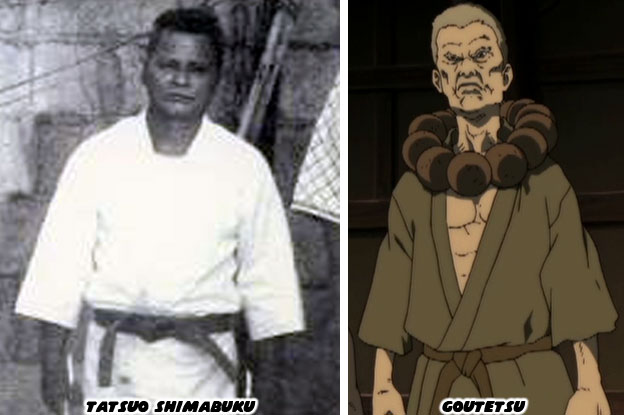
Isshinryu was a functional form of karate which included vertical strikes (shoryuken?) yet also maintained spiritual beliefs. It bridged the old traditions with the modern concepts of karate. It also predated Oyama's Kyokushin Karate by many years. Tatsuo was a Chinese descendant and the form his uncle introduced to him was rooted in classic Chinese systems. The spirituality behind Isshinryu closely mirrored the philosophy behind many Chinese forms. There was a science behind the fantastic feats of strength and endurance that martial arts practitioners could perform but for most of their history it was assumed to have spiritual importance. The next blog will look at how the myth of the fireball came into being. As always if you enjoyed this blog and would like to sponsor me please visit my Patreon page and consider donating each month, even as little as $1 would help make better blogs and even podcasts!

No comments:
Post a Comment